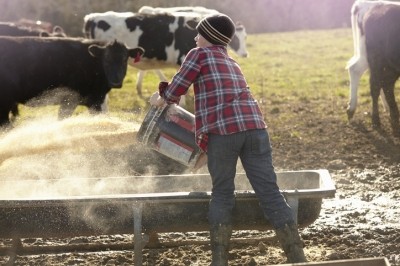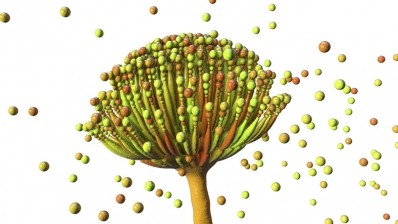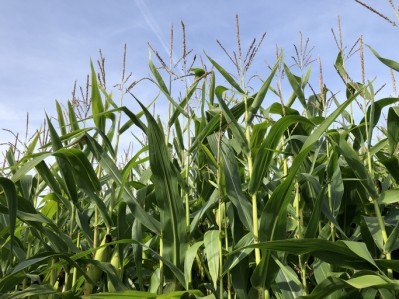Special Edition: Mycotoxin Risk and Control
Advances and challenges in controlling mycotoxins

The consequences of the ingestion of mycotoxin-contaminated feed on animal health are manifold, says the Austrian company. Knowledge is increasing around the variety of mycotoxins, how frequently they are present in animal feed and, importantly, how much of their effect can simply be impaired performance and increased susceptibility to disease.
Recent studies have demonstrated very clearly that mycotoxins can have a role in the early development of diseases such as necrotic enteritis and coccidiosis in broiler production, said Verena Starkl, senior product manager, Biomin.
“Mycotoxins target gut integrity and can destroy the intestinal barrier function of the bird’s gastrointestinal tract (GIT), allowing easier invasion by pathogens,” she told us.
But beyond intestinal diseases, mycotoxins are also linked to the onset of respiratory diseases in finishing pig production. “In Latin America, there is a growing awareness among producers that mycotoxins, especially fumonisins (FUM), act as a co-factor in the development of respiratory diseases.”
Mycotoxins can also cause vaccination failures and increase bacterial contamination of the carcass, added Starkl.
A study carried out by the University of Veterinary Medicine in Vienna with the BIOMIN Research Center found that deoxynivalenol (DON) can alter the intestinal paracellular permeability in broiler chickens and facilitates the translocation of enteric microorganisms such as E. coli to extra-intestinal organs. The consumption of DON-contaminated feed can induce an intestinal breakdown with negative consequences on broiler health, found those researchers.
An INRA study from 2018 confirmed the negative impact of DON on feed intake, feeding behavior, and the growth performance of finishing pigs, and the severity of DON toxicity on pig performance is related to the duration, the age of exposure and the number of toxin challenges.
As a result, she said, producers around the world are seeking out remedies for mycotoxin control for all life stages in broiler and pig rearing, including the later phases, to enable them reach production goals.
“In an attempt to meet the demands of producers, we enlarged our Mycofix portfolio to offer a full toolbox to manage those specific challenges,” said Starkl.
Biotransformation work
Unlike aflatoxins, and due to their chemical structure, FUM, trichothecenes, and zearalenone (ZEN) cannot be bound by binders, so in this respect, Biomin has spent the past two decades exploring alternatives to adsorption to degrade such mycotoxins with the company primarily focused on enzymatic biotransformation.
In July this year, the company’s FUMzyme product, which was the first-ever purified enzyme authorized by the EU as substances to degrade FUM in the GIT into non-toxic metabolites, got a positive opinion from EFSA in relation to its efficacy as a silage additive. “We are awaiting EU authorization on this presently,” said Starkl.
The company’s R&D team is also looking to degrade DON and ZEN through the use of specific, purified enzymes. Indeed, Biomin is far advanced in terms of the development of the enzyme for the biotransformation of zearalenone and it will be launching this product early next year, said Starkl.
Relying on its purified enzymes, she said the company has also had significant success in reducing the high levels of mycotoxins in the production of biofuels and fermentation by-products such as distiller's dried grains with solubles (DDGS), used in livestock feed.
Forecasting
Along with mycotoxin decontamination technology, Biomin has been working on a mycotoxin prediction for the past three years, launching a forecasting service in June this year.
“[That tool] makes predictions for the whole world about the relative risk of mycotoxin contamination. The data is based on published academic models for corn and wheat and adapted for global use. It is also validated using the results of our worldwide mycotoxin survey, which, since 2004, has seen us analyze around 10,000 samples per year,” remarked Starkl.
The dataset the tool relies on is vast, she said, particularly as it relates to the analysis of weather-related impacts on plants, and the biochemistry of mycotoxin production. "We use data of 61,000 global weather stations that send us an update every hour.”
The prediction tool, as it stands, can be used by feed millers to manage quality control, as they can decide to only test for the mycotoxins forecast as having a high occurrence in a particular year, and larger companies could also use the tool ahead of purchasing decisions on corn, for example, seeking to buy from regions with a predicted lower mycotoxin presence.
Through collaboration with the MyToolBox project, the prediction tool will eventually be able to be used in wheat related mycotoxin contamination forecasting in Europe by individual farmers, with accuracy down to the field level, allowing grain growers to optimize crop management practices, harvesting time, to reduce mycotoxin risk. “This service is not yet available, but it is one that we will offer in the near future, initially, though, only to European farmers.”












